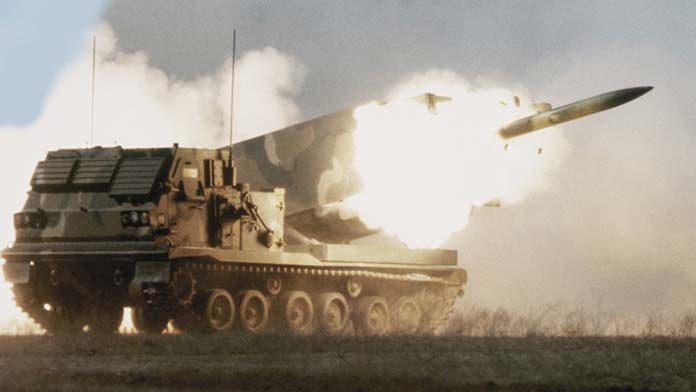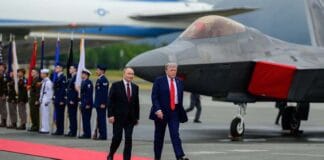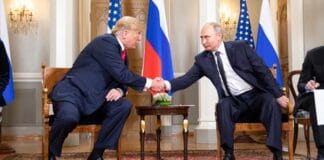The war between Russia and Ukraine continues to drag on with no end in sight. As Solidarity goes to press, intense battles are raging around the cities of Severodonetsk and Kharkiv, strategically important for the control of the Donbas region.
Russia’s invasion was brutal and unjustified. It has now resorted to increasingly barbaric actions aimed at levelling cities with no regard for civilian lives.
According to Mykhailo Podolyak, an aide to President Zelensky, between 100 and 200 Ukrainian soldiers are being killed every day. Russian casualties are very high too. In Severodonetsk, only about 12,000 out of a pre-war civilian population of about 100,000 remain. Russia has destroyed all the bridges crossing the river, closing off further escape routes.
Ukraine is calling on the West to provide heavier weapons to prevent Russian gains.
The US and its Western allies are more than happy to oblige. Unprecedented amounts of arms and ammunition have been pouring into Ukraine. A special room has been established in a US military base in Stuttgart, Germany, where military personnel from 26 nations work around the clock, coordinating and delivering weapons and ammunition.
Even though NATO troops are not directly involved in the conflict, this unprecedented aid, combined with economic sanctions on Russia, has turned the conflict into a proxy war between Russia and the West.
The US and its allies are now effectively propping up the Ukrainian government. It is reliant on them both for military equipment and financial aid, requiring $5 billion a month to pay soldiers and government employees.
In May, the US Congress voted for a $40 billion economic and military aid package for Ukraine for the next five months. The aid is predominantly military and is “escalatory”, according to Elias Yousif of the Stimson Center, a Washington think-tank. “It’s gone from single-man, shoulder-fired weapons to heavy artillery, rotary wing aircraft, more armored personnel carriers and some very advanced, unmanned aerial vehicles”.
The scale of this far exceeds the annual $3.8 billion Israel, historically the biggest recipient, gets in US military aid and is more than three times Ukraine’s total military budget last year.
It brings total US aid since the war began to $53 billion.
It is not just the US pouring lethal aid into Ukraine. Britain has sent “thousands” of NLAW anti-armour weapons and Javelin anti-tank missiles; trained 22,000 soldiers and sent $45 million to help pay the wages of Ukrainian soldiers.
Australia is supplying 40 Bushmaster vehicles, several thousand Steyr rifles, $50 million worth of rockets and ammunition, six M77 howitzer artillery pieces, and 14 M113 armored personnel carriers. It has committed $225 million in military aid and $65 million in humanitarian aid.
On 26 April, “stakeholders” from more than 40 countries met at the Ramstein Air Base in Germany and discussed maintaining “a steady flow of weapons and other military aid”. They included Ukraine and the 30 NATO countries as well as Sweden, Finland, Australia, New Zealand, South Korea, Japan, Morocco, Kenya, Liberia, Tunisia, Jordan and Israel.
US aims
Following humiliation in Iraq and Afghanistan, the US sees this conflict as a way to reassert its global power and send a message to China.
At the start of the war the US’s ambitions were to prevent an easy Russian victory. But the Ukrainian resistance, with the help of Western arms and training, have done better than expected. Russia was forced to halt its all-out assault on Kyiv and to concentrate on making more modest gains in the Donbas region closer to Russia’s border. The US and their allies see a chance to either defeat or severely diminish Russian power.
“We want to see a strategic defeat of Russia,” said Julianne Smith, the US ambassador to NATO. “We want to see Russia weakened”, said US Defence Secretary, Lloyd Austin.
There is now a race to pour arms into Ukraine to prevent Russian advances in the Donbas and prevent Putin from getting a face-saving victory.
Mexico’s left-wing President López Obrador has described NATO’s actions in Ukraine as “immoral” and equivalent to saying, “I’ll supply the weapons, and you supply the dead.” Obrador is right. This is a conflict between two imperialist blocs that workers in Russia and the West should oppose.
Ukrainian and Russian workers are paying with their lives and the erosion of their rights. Ukrainian men of fighting age are prevented from leaving the country, while under the cover of martial law Bill 5371, which makes it easier for employers to dismiss workers, is back on the agenda of the Ukrainian parliament.
Workers all around the world are paying the cost of the war as well. It has led to massive increases in the prices of food and fuel. Meanwhile money is being diverted away from social welfare to pay for arms. An anti-war movement is starting to develop in Russia. We need one in the West too.
By Mark Gillespie






